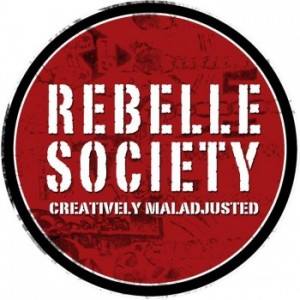Creative Collaboration: the Greater Sum of Our Parts.
~ Photograph of Two Women – www.photosofoldamerica.com ~
By Sharon Smith & Louise Stevens.
The place between people is feminine.
You know, it’s the ‘no thing’. It is presence: site-full: full of site, that which is in between her and me, and for now, between you and me, is so contaminated by us and everything we are that it is neither one nor the other. It is both. This in between undermines the autonomy of either. This is the condition of the feminine, of the live event, of the conversation: an unending negotiation of ‘I’: of who, where and how ‘I’ is.
Being with her reminds me that I am intrinsically dialogue. I don’t know everything. I cannot know everything. I don’t want to know everything. We are ignorant and yes this is bliss. This ignorance has been achieved through a self-scrutiny, an analysis of what I think I know. This is a purposeful embrace of the naïve (artless, unaffected, amusingly simple) as a conscious ambivalence towards knowledge.
When we collaborate we enter into this experience together, to be open/effective/present/infective. A conversation is not about homogeneity or evenness or sameness. It demands acceptance or else it refuses to flow.
There is ‘riot’ within us. Unrestrained revelry: Occasions of boisterous merriment. We behave without restraint. Wanton lasciviousness.
Women who make spectacles of themselves are vulnerable, open to ridicule and trivialization, but also vaguely demonic. (K. Rowe, Unruly Women.1995: 3)
Rowe defines the unruly woman as one who disrupts the norms of femininity. Ideology holds that the “well adjusted” woman has what Helen Cixous has described as divine composure: ”She is silent, static, invisible – composed and divinely – apart from the hurly burly of life, process, and social power” (in Rowe: 31). The unruly woman, through her body, her speech and her laughter, especially in the public sphere, makes a disruptive spectacle of herself. She literally straddles herself between contesting ideologies.
The unruly woman uses the semiotics of unruliness to break frame, to disrupt, to expose the gaps in between ‘realities’. Her desire has a different economy that “upsets the linearity of a project, undermines the goal – object of a desire, diffuses the polarization toward a single pleasure, and disconcerts fidelity to a single discourse…” (L. Irigaray, This Sex Which Is Not One. 1985: 30).
Louise carried these dolls around for years. She always loved tiny stuff. I found the dolls pretty creepy, but I loved them because she loved them so much. She had this doll’s house in her hallway that was always stuffed with things like shoes and bags and purses. She would get excited about the scale of the shoes to the rooms. She’s like that. I would never keep shoes in a doll’s house. That’s way too disorganized. Not the way I roll. In fact I have no possessions. She completes me. And me with her together equal greater than the sum of our parts: Full of transformations.
The dolls never lose their posture. They sit static and silent whilst their voices (our voices) spill hurly burly all over the place. That’s why we love them so much. They are the greater sum of our parts.
A successful collaboration is when we do not know quite how an idea came to be. In this sense we surrender ‘authority’. There is no origin because there are always at least two points. There is no origin because there are no points whose co-ordinates are all zero. We are no points. Zero. We are for the love of something. Amateurs. Brilliant amateurs.
Little House is a satirical comedy sketch show of minute proportions. Off-kilter and hilariously weird, the viewer is fly-on-the-wall to a casual conversation between two dolls enjoying a quite drink in the privacy of their own home. In this, the first episode of the series ‘Milk’, dolls Crystal and Magalie discuss the possibilities and pitfalls of selling breast milk on the open market.
The Adobe Flash Player is required for video playback.
Get the latest Flash Player or Watch this video on YouTube.
*****
As well as being great friends, Sharon Smith & Louise Stevens have been collaborating since the early 90′s in a cross-pollination of music, film and performance. Both were members of the OMSK arts collective. Stevens’ film career won her acclaim on the independent circuit in the 90′s. Her films were screened internationally and “Baby Girl” one of the collaborations with Smith was programmed as part of a national touring exhibition ‘Girl’. Stevens went on to form Setla and is now co-director of a communications cooperative. She lives and works in London. Smith is a performer and writer living in Berlin and working with the arts collective Gob Squad. She has a PhD in contemporary performance practice and has performed and taught dance and performance all over the world in diverse contexts. ‘Little House – Milk’ is being screened as part of the London Short Film Festival 2014.
*****
{Live a the creative, collaborative life.}


